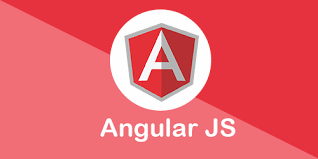Hello, readership! Can you believe that almost 2.5 billion websites have already been registered in the network nowadays? Amazing number, huh? And as you are reading this article about how to create a website using AngularJS technologies, it seems to me that this number is going to grow a bit.
Actually, AngularJS is a great choice for development. It is considered to be a framework with strict rules, detailed structure and regulated documentation. It is suitable for making great and dynamic websites and applications.
As the template language is HTML, it really expands the variety of uses and lets you express the components of your app or site accurately and quickly. What is more, this outstanding framework is connected with the browser and in such a way it makes a dependency injection for any of the server technologies. Besides the better structuring of the JavaScript code, it is suited for a wide range of testings.
This article is a brief guide about how to create a website with the help of the AngularJS. I will show you a quite simple example of creating a single page application (SPA).
To be more clear, remember how the Netflix website looks like. The user interface of Netflix is designed in such a way that the navigation within it is performed so that you don’t have to refresh the whole page all the time. This is the sense of SPAs and their main advantage.
Also read: A Flaw in Some Websites Allows You to Avoid Ads by Adding a Point…
Why are Single Page Apps so popular?
- Improved user experience.
The UI of the SPA is rather better for perception for the users in the modern times. It works straight in the browser. The main thing is that being single-paged, you don’t have to refresh the page and in such a way you spare your time without waiting. As a rule, the content is downloaded in the automatic way and the page doesn’t need to be updated. Frankly speaking, all of us use such kinds of apps every day even without realising it. For example, Google Maps, Gmail, Pinterest or Trello. These popular websites are perfect examples of SPAs.
- Data Binding
AngularJS is a framework that supports two-way data binding. That means that whenever the inner model is updated, the view also gets renewed. This is because AngularJS follows the MVC (model-view-controller) architecture. Therefore, the data can be viewed by the user, what is based on his particular preferences.
- Capability of caching
Effective is the process of caching within using a single page app. An SPA sends only one request to the server. After that it stores all the data that it has received. Then it can use this data in order to launch a page even without internet connection. If it happens that a user has an unstable internet connection, the local data synchronizes with the server and loads the data when the connection is stable.
- Quickness
Single page applications created with the help of the AngularJS are also so popular because of the support of the agility. It means that it can handle the newest and the most complicated requests from entrepreneurs.
Almost 30000 modules exist in the AngularJS environment and all of them are fully available for rapid application development. In case when a software engineer has a wish to remake something a little bit in the application that already exists, he or she can use the modules that have opened access and then tweak the code instead of creating the whole application from the very beginning.
How to Develop a Single Page Application Using AngularJS?
Here is a guide about creating the website in AngularJS. Follow these steps attentively to succeed. Let’s get started!
Step 1: Create a Module
It is a well-known fact and it was mentioned above that AngularJS is based on the MVC architecture. Therefore, every AngularJS application consists of a module that comprises controllers, services, etc.
var app = angular.module(‘myApp’, []);
Step 2: Define a Simple Controller
app.controller(‘FirstController’, function($scope) {
$scope.message = ‘Hello from FirstController’;
});
Step 3: Include AngularJS script into the HTML code
Specify the module (that was created in step 1) in ng-app attribute and the controller (defined in step 2) in the ng-controller attribute.
<!doctype html>
<html ng-app=”myApp”>
<head>
<script src=”https://cdnjs.cloudflare.com/ajax/libs/angular.js/1.4.7/angular.min.js”></script>
</head>
<body ng-controller=”FirstController”>
<h1>{{message}}</h1>
<script src=”app.js”></script>
</body>
</html>
Once the code is run on localhost, the output will be as shown below.
3-2.Angular JS script in HTML code
It is now confirmed that our module and controller are already set up, and AngularJS is working properly.
Step 4: Use AngularJS’s routing capabilities to add different views to our SPA
We need to include angular-route script after the main angular script.
<script src=”https://cdnjs.cloudflare.com/ajax/libs/angular.js/1.4.7/angular.min.js”></script>
<script src=”https://cdnjs.cloudflare.com/ajax/libs/angular.js/1.4.7/angular-route.min.js”></script>
We need to use the ngRoute directive to enable routing.
var app = angular.module(‘myApp’, [‘ngRoute’]);
Step 5: Create an HTML layout for the website
Once an HTML layout for the website is created, we need to use the ng-view directive to specify the place where the HTML of each page will be placed in our layout.
<!doctype html>
<html ng-app=”myApp”>
<head>
<script src=”https://cdnjs.cloudflare.com/ajax/libs/angular.js/1.4.7/angular.min.js”></script>
<script src=”https://cdnjs.cloudflare.com/ajax/libs/angular.js/1.4.7/angular-route.min.js”></script>
</head>
<body>
<div ng-view></div>
<script src=”app.js”></script>
</body>
</html>
Also read: Easy Steps to Create a Non-Profit Website Yourself
Step 6: Use $routeProvider service from ngRoute module to configure the navigation to different views
It is necessary to specify a templateUrl and a controller for each route that we wish to add.
Exception handling has to be accommodated when a user tries to navigate to a route that doesn’t exist. For simplicity, we can write an “otherwise” function to redirect the user to the “/” route.
var app = angular.module(‘myApp’, [‘ngRoute’]);
app.config(function($routeProvider) {
$routeProvider
.when(‘/’, {
templateUrl : ‘pages/first.html’,
controller : ‘FirstController’
})
.when(‘/blog’, {
templateUrl : ‘pages/second.html’,
controller : ‘SecondController’
})
.when(‘/about’, {
templateUrl : ‘pages/third.html’,
controller : ‘ThirdController’
})
.otherwise({redirectTo: ‘/’});
});
Step 7: Build controllers for every route specified in $routeProvider
app.controller(‘FirstController’, function($scope) {
$scope.message = ‘Hello from FirstController’;
});
app.controller(‘SecondController’, function($scope) {
$scope.message = ‘Hello from SecondController’;
});
app.controller(‘ThirdController’, function($scope) {
$scope.message = ‘Hello from ThirdController’;
});
Step 8: Configure the pages
first.html
<h1>First</h1>
<h3>{{message}}</h3>
second.html
<h1>Second</h1>
<h3>{{message}}</h3>
third.html
<h1>Third</h1>
<h3>{{message}}</h3>
Step 9: Add links to the HTML that will help in navigating to the configured pages
<!doctype html>
<html ng-app=”myApp”>
<head>
<script src=”https://cdnjs.cloudflare.com/ajax/libs/angular.js/1.4.7/angular.min.js”></script>
<script src=”https://cdnjs.cloudflare.com/ajax/libs/angular.js/1.4.7/angular-route.min.js”></script>
</head>
<body>
<a href=”#/”>First</a>
<a href=”#/second”>Second</a>
<a href=”#/third”>Third</a>
<div ng-view></div>
<script src=”app.js”></script>
</body>
</html>
Step 10: Include the HTML of routing pages to index.html file using script tag
<!doctype html>
<html ng-app=”myApp”>
<head>
<script src=”https://cdnjs.cloudflare.com/ajax/libs/angular.js/1.4.7/angular.min.js”></script>
<script src=”https://cdnjs.cloudflare.com/ajax/libs/angular.js/1.4.7/angular-route.min.js”></script>
</head>
<body>
<script type=”text/ng-template” id=”pages/first.html”>
<h1>First</h1>
<h3>{{message}}</h3>
</script>
<script type=”text/ng-template” id=”pages/second.html”>
<h1>Second</h1>
<h3>{{message}}</h3>
</script>
<script type=”text/ng-template” id=”pages/third.html”>
<h1>Third</h1>
<h3>{{message}}</h3>
</script>
<a href=”#/”>First</a>
<a href=”#/second”>Second</a>
<a href=”#/third”>Third</a>
<div ng-view></div>
<script src=”app.js”></script>
</body>
</html>
(When Angular detects the templates defined by the ng-template directives, it will load its content to the template cache)
Once the HTML is run on localhost, the following page is displayed.
That’s it! Hope you could create a simple SPA as I demonstrated in this article. Once you get the output successfully, you can try out complex SPAs on the same lines.
Conclusion
To draw a conclusion, AngularJS is the obvious choice for creating your website. I hope that this will not only help you develop well-architectured and maintainable rich web applications, but also give you some solid reasons to choose AngularJS Development for your numerous upcoming projects.
Also read: 6 Web Design Factors That Can Improve Your Website Performance











